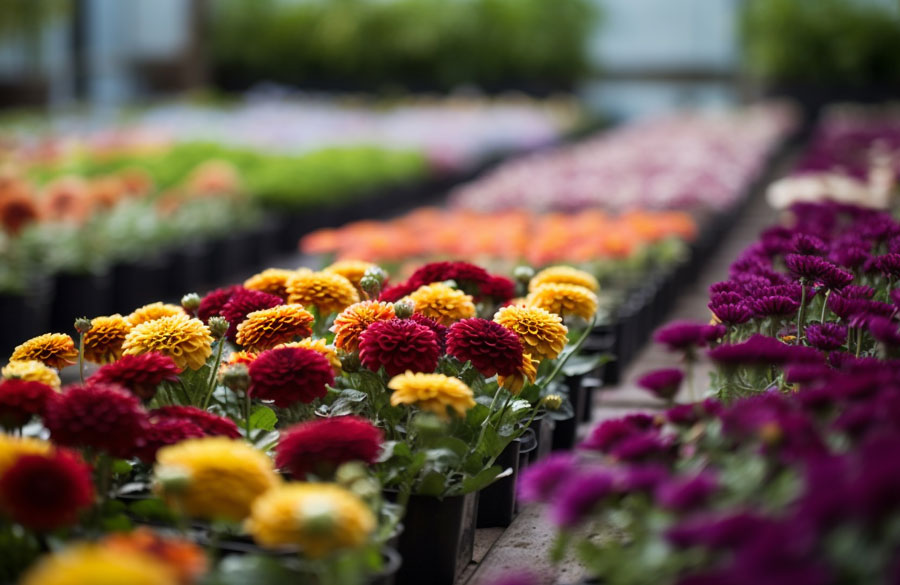The floriculture industry encompasses a wide variety of planting styles from bedding, to potted and cut flowers. Lighting needs to vary based on species and production styles, however light remains an integral growth variable in production. Low light conditions result in poor quality plants that show an increase in blindness, stretching and have smaller flowers with thinner stems. If plants are grown at excessively high light levels, leaf orientation will change to avoid the light and the plants may also develop “sunburn”.
Cannabis is a plant for which light (or dark) is a necessary component for inducing flowering. Cannabis will flower only when days are short as the plant’s chemical signal begins to accumulate. In nature, we see this happen during the fall. In a controlled production setting, grow lights can be used to manipulate this chemical signaling to better control crop growth rates, yield, and other characteristics.
Horti-Sky provides periods of reduced intensity, which allows regeneration of the photosynthetic apparatus and ensures better preparation for the efficient use of light of a higher intensity. In this way, energy management within the plant becomes more efficient.
Horti-Reina is a greenhouse supplemental intercanopy light, being angled with respect to the horizontal, that 120° light is only accessible at the highest part of the crop because of the density of the leaves of the plant.
Horti-Mars commercial LED grow light specializes in all grow stages including propagation, vegetation and flowering. It is an ideal lighting solution for commercial cannabis growing racks
Horti-King is a full-cycle top lighting solution for cannabis plants, the installation and intended use. simplicity of installation and use make it an ideal solution for achieving high and uniform lighting levels in greenhouse and indoor sole-source applications.
- The first number (0-6) refers to the level of protection against solid objects and moving parts, such as dust, debris, or other solid matter.
- The second number (0-8) references the level of liquid and moisture protection.
IP65 Rating means the product has the highest level of dust protection, and is able to withstand low-pressure water jets from all directions.
- Plants detect wavelengths that include ultraviolet radiation (260–380 nm) and the visible portion of the spectrum (380–740 nm) which includes PAR (400–700 nm), and far-red radiation (700–850 nm).
- The peak of photosynthetic efficiency (light absorption) falls in the red light and blue light spectrums of the PAR range. Red radiation (around 700nm) is considered most efficient at driving photosynthesis – especially in the flowering stage for biomass growth (important to Cannabis growers). Blue light is essential for both the vegetative and flowering stages of plant growth, but mainly for establishing vegetative and structural growth.
The radiation within a specific wavelength range (400-700 nm) that plants use for photosynthesis is called photosynthetic active radiation.
The number of micromoles per second of photons emitted by an artificial light source with a wavelength of 400-700 nm,unit: umol/s.
Corresponding to PPF is the number of micromoles per second emitted from the light source per square meter,unit umol/m2s,it’s the idea of density.
PPFD is the PPF within one square meter.
Project Planning
Research & Analysis
Execute Project
Make it Happen
Got an Incredible Project Right Now?
We ensure quality, schedule and that we’re all working toward same goal

